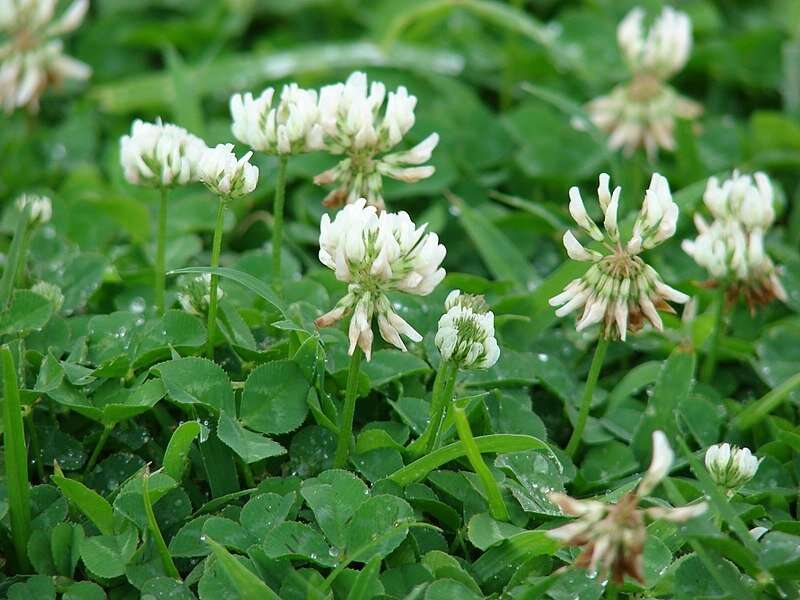White clover's toxic tricks traced to its hybridization

White clover is a weed that grows the world over—there's a good chance you have some growing in your yard today. The plant that yard-preeners love to hate was spawned about 20,000 years ago when two European clover species hybridized.
The family history of white clover (Trifolium repens) was pinned down years ago, but biologists at Washington University in St. Louis have just uncovered the genetic backstory of white clover's biggest trick.
White clover releases toxic cyanide when its leaf tissues are damaged. This chemical defense, a response called cyanogenesis, helps it to deter insect pests. Research published in New Phytologist shows how white clover developed its anti-herbivory superpower with input from both of its seemingly innocuous parents.
"In this study, we showed that the genes that are required for cyanogenesis in white clover come partly from one of its parental species, and partly from the other," said Kenneth M. Olsen, professor of biology in Arts & Sciences and lead author of the study.
"Whereas the two parental species have very narrow ecological niches—one grows only along Atlantic coastal cliffs in western Europe, the other only in alpine habitats of central Europe—white clover's ecological success can be attributed at least in part to cyanogenesis," he said.
For the new study, Olsen and his collaborators integrated high-resolution genetic maps with genome sequence analyses. They determined that each of white clover's two diploid ancestors contributed one of the two chemical components required for cyanogenesis.
A large proportion of today's plant species originated through hybridization, the process through which two existing species cross with each other to form an entirely new species.
New species formed this way sometimes retain the complete genomes of both parental species. (The technical term for this is allopolyploid speciation.) Because they contain all of the genetic material from both of their parents, the species potentially can rapidly evolve all sorts of new adaptations that allow them to thrive in a wide range of new environments.
At least, that's how it's supposed to work. But, surprisingly, there are very few examples of hybridization resulting in a potent advantage.
White clover's chemical defense system appears to be one.
"Although this basic phenomenon of adaptation through allopolyploid speciation is thought to be very prevalent and important in plant evolution, there are very few cases where a new adaptation has actually been shown to have evolved by this mechanism," Olsen said. "That's what we've done in this study."
More information: Kenneth M. Olsen et al, Dual‐species origin of an adaptive chemical defense polymorphism, New Phytologist (2021). DOI: 10.1111/nph.17654
Journal information: New Phytologist
Provided by Washington University in St. Louis





















